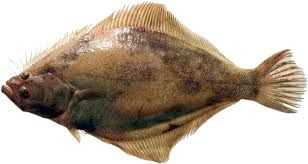Pacific Sand Sole

Species Details
Psettichthys Melanostictus
Pleuronectidae
Pleuronectiformes
Offshore, Continental Shelves, Slopes, Inshore, Piers, Wharfs
2 - 5 lbs.
23" - 25"
Pacific Sand Sole (Psettichthys melanostictus) Description
The Pacific Sand Sole is a small species of saltwater flatfish. It has an oblong body with a tiny pectoral fin and its rays are soft. The Pacific sand sole has a large mouth and it comes in a variety of mixed colors – ranging from brown, gray, or olive, with blotches of dark brown or black. This species close relative is the Dover sole.
Size and Diet
The biggest Pacific sand sole ever caught was 5.47 lbs and lengthwise they can be as big as 24.78 inches. Anglers claim that the common catch for this fish is around 16 inches, but as of now, the average weight and size for this fish is unknown. The Pacific sand sole is carnivorous. It eats fishes, worms, crustaceans, and mollusks.
Interesting Facts About the Pacific Sand Sole
- The best way to eat a Pacific sand sole is through deep frying. Some also prefer baking them.
- Their scientific came from 4 different Greek words - psetta meaning flounder, ichthys for fish, melas means black, and stictos is for specks.
- They use their flat bodies to blend with their surroundings. This works as camouflage to hunt their prey and to also avoid predators.
- They are part of the Pleuronectidae family or right-eyed flounders. Meaning their face is always on the right side and the left side is their bottom.
- The Pacific sand sole looks like a regular fish when they’re young. They’re not flat but once they start to mature, their left eye starts to migrate to the top side and they become flat.
Fishing Techniques: How to Fish the Pacific Sand Sole
One of the best methods to catch this fish is by using a sabiki rig setup. Look for a spot where the bottom is flat. Drop cast your lure to your spot, wait until you hit the bottom. Once you hit the bottom, give it a little tug to make sure you’ve hit the bottom. Also, don't go against the current, always follow it to make your presentation more natural. Release some line as you wait for a catch. Then set the bail once you make your lure bouncing. You want the lure to bounce to make it more enticing for the fish. Once you catch one, you can wait for more fish to take a bite at your multi-rig.
For the equipment - use a light action rod of 6-8 feet with 2 oz banana weight. For hook sizes, you can choose between 6 up to 1/0 hook. You can also use heavy sinker lines to help you maintain that bottom depth.
The baits to use are smelts, anchovies, shrimps, herring, clams, and squid. The best lures to use are jigs, hootchies, and flies.
Habitat and Distribution
The Pacific sand sole is a saltwater fish that prefers to dwell on sandy bottoms with gravel surrounding of continental shelves. They can generally be caught in shallow waters of man-made structures such as piers and wharves. Their average depth is 230 feet or less, but they can thrive as deep as 508 feet. They prefer temperate waters around 68° F to 77°F. Their spawning season is from late winter through mid-spring.
Their range stretch from the eastern North Pacific Ocean - from Alaska to Southern California. Good fishing spots are in the Bering Sea and the Aleutian Islands. The most popular state to catch this fish in California. You can try places such as Redondo Beach, Trinidad Pier, Seacliff State Beach Pier, Capitola Wharf, and Santa Cruz Wharf. You can also catch them in Puget Sound, Washington.






